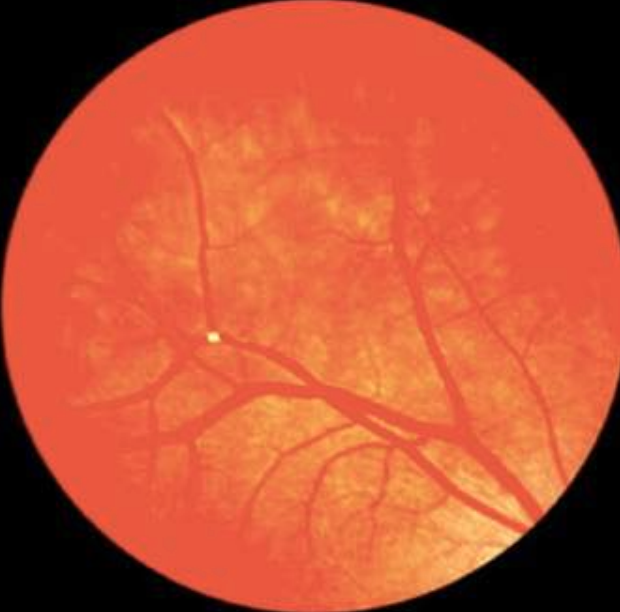 |
nAMD patients had a much higher incidence of RVO than controls in this cohort. Photo: Julie Rodman, OD. Click image to enlarge. |
A large population-based study recently found that patients with neovascular age-related macular degeneration (nAMD) are at increased risk of developing another vision-threatening condition: retinal vein occlusion (RVO). The nAMD patients in this study demonstrated a five-times greater risk of the comorbidity compared with controls.
Data from 24,578 patients with nAMD and 66,129 age- and sex-matched control subjects were analyzed. Risk of RVO among each group and patient mortality were also assessed. Interestingly, 94% of subjects were of Jewish ancestry, as this study used medical records from Ben-Gurion University in Israel. However, the researchers acknowledged this uniformity as a limitation in the study design and did not draw any conclusions about the potential impact of ethnicity on the clinical findings.
In nAMD patients, the incidence rate of RVO was estimated to be 1.25 per 1,000 person-years (a metric used in research that combines the number of subjects and study duration). For control subjects, the estimated incidence rate was significantly lower, at 0.25 per 1,000 person-years. All-cause mortality rates were comparable between controls and patients with nAMD and comorbid RVO.
Male sex is a known risk factor for RVO, and this study confirmed that incidence was increased among male patients with wet AMD, though females also showed a significantly increased risk. Surprisingly, older age appeared to be a protective factor against RVO, with nAMD patients older than 79 showing a decreased risk of RVO. History of glaucoma increased the likelihood of developing nAMD.
“Glaucoma emerged as an independent predictor of subsequent development of RVO in patients with nAMD,” the researchers wrote in their paper for the British journal Eye. “Younger patients were additionally found as an independent predictor of RVO. Therefore, younger nAMD with comorbid glaucoma should be examined carefully to exclude signs of RVO and its complications.”
Based on this data, the researchers recommended regularly screening nAMD patients for signs and complications of RVO. As the second most common cause of severe visual impairment and blindness in the elderly, RVO can produce devastating visual outcomes, but catching the condition early will help to reduce these odds.
Weinstein O, Kridin M, Kridin K, et al. The risk of retinal vein occlusion among patients with neovascular age-related macular degeneration: a large-scale cohort study. Eye (Lond). July 1, 2022. [Epub ahead of print]. |


